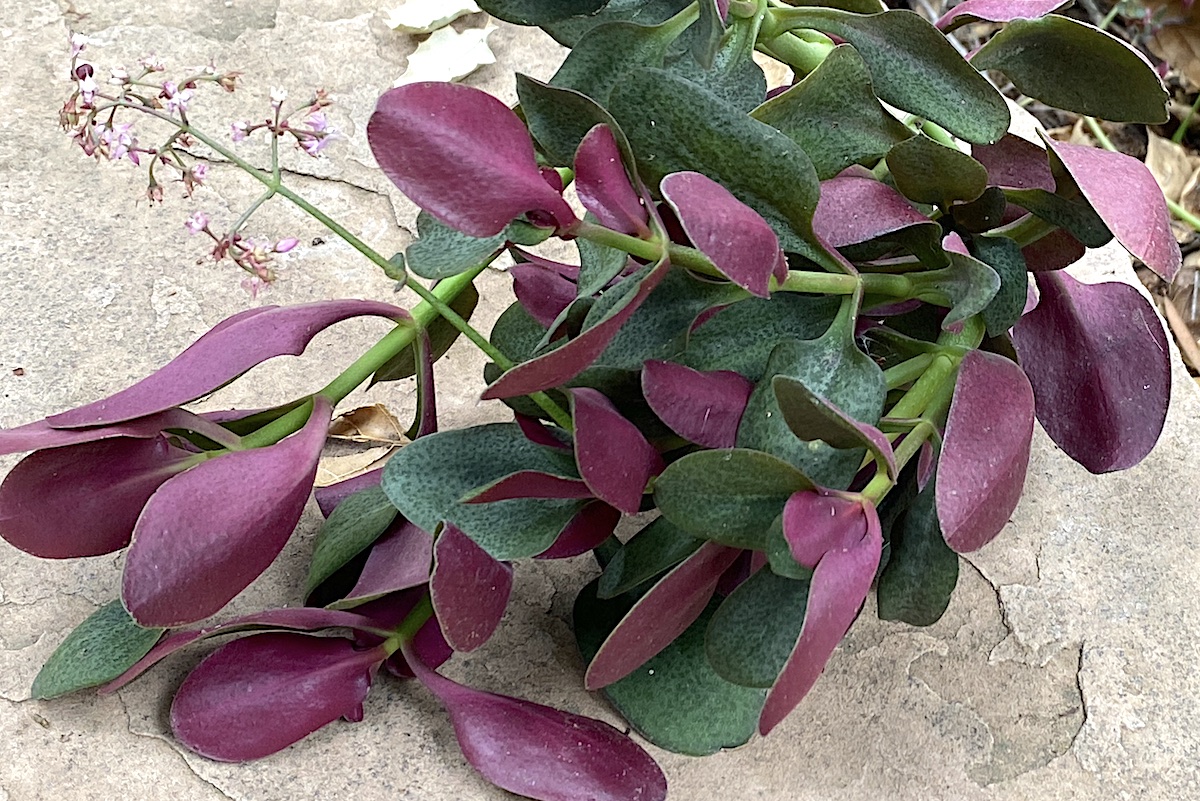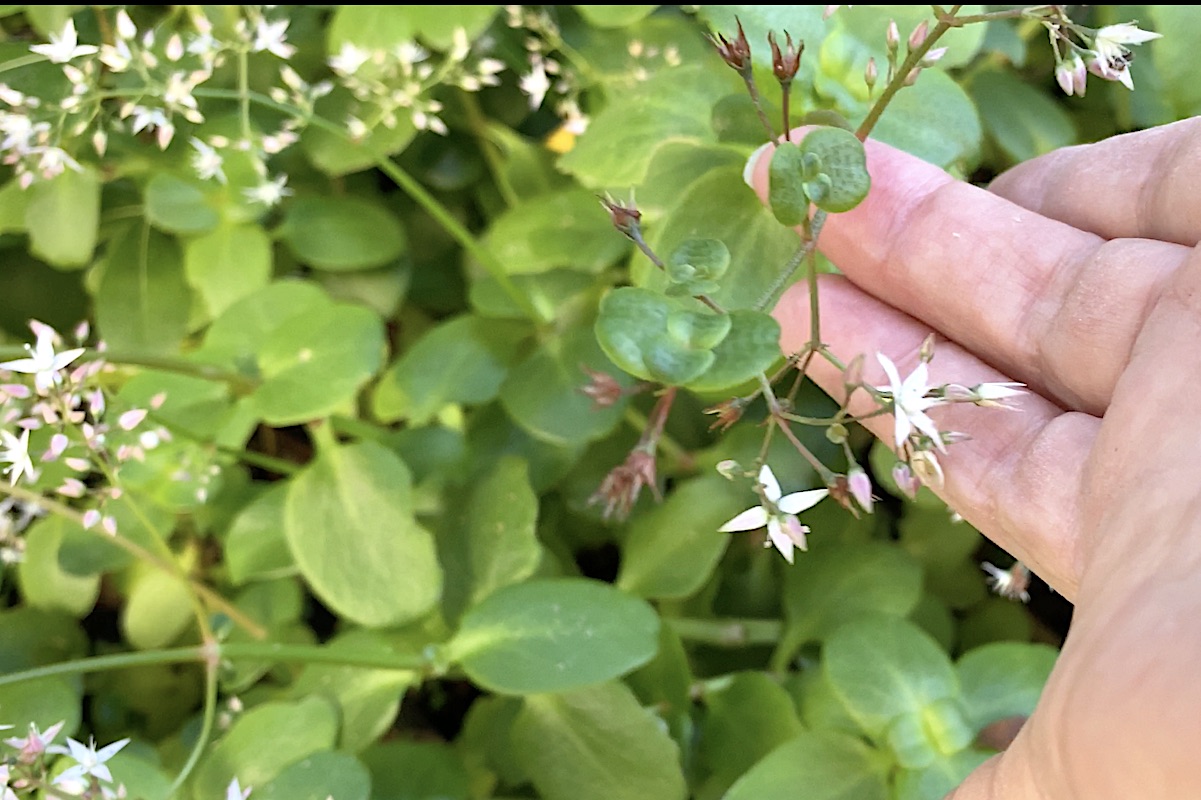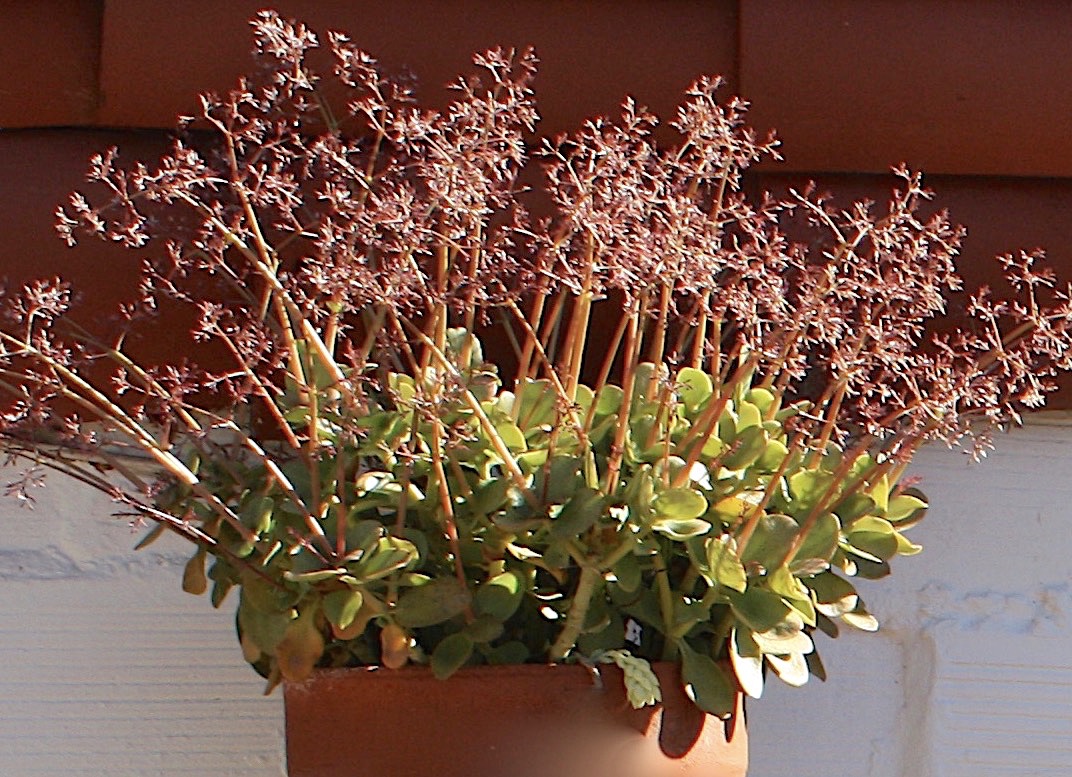Fairy crassula (Crassula multicava) is a great succulent ground cover for shade. I've grown it since the '90s under oaks on a steep slope. It has sentimental value: My dad gave me the first cuttings. But like its cousin jade (Crassula ovata), this simple green succulent gets no respect. What is it with us gardeners that we sneer at easy-care plants that work well where nothing else does? "Common" isn't a compliment!
Case in point: At Waterwise Botanicals nursery, I ran into an old friend who is a renowned succulent gardener. He was curious what I had in my cart. I showed him something I'd found that thrilled me. He barely glanced at it. "Oh that," he said dismissively. "I had to pull it out of my garden because it was taking over."
I stammered, "Yes, but this one has red on the underside of its leaves." But he'd moved on. Maybe he already knew about Crassula multicava 'Red' and wasn't impressed. Yet I thought it gorgeous, and it's doing as well in my garden as the good ol' green one from dad's. As for the species taking over, certainly it spreads, but slowly. It's never been a problem. In fact, it has a handy way of filling gaps.

Crassula multicava 'Red' (red fairy crassula) has other cultivar names, including 'Purple Dragon' and 'Ngabara'.
In winter, typical of the genus, fairy crassula produces dainty star-shaped, pinkish-white flowers. By spring, masses of airy blooms on slender, branching stems float above oval green leaves. That is, if frost doesn't get them...which is likely why mine is less vigorous. Nearly every winter, frost hits exposed garden areas, confining tender plants to more sheltered spots. But fairy crassula prefers shade regardless. It burns in searing summer sun here (inland CA, Zone 9b).

Crassula multicava plantlets
It's fascinating how fairy crassula spreads. As flower stalks elongate, they produce itty-bitty plantlets that become heavier and more pendant. When about dime-sized, they touch the ground and take root. This often happens far enough from the mother ship that plantlets don't compete for light and nutrients.
As for Crassula multicava being invasive, it usually grows in leaf duff, so a gentle yank removes it. That said, if you do have ideal conditions for succulents---temps between 40 and 90, low humidity, good soil, and bright shade---it may be more vigorous than you prefer. But in less-than-ideal gardens, you'll love it and it'll love you.

Smaller, lighter green leaves and red stems indicate Crassula multicava is getting more sun than normal. But that's OK near the coast.
15 reasons to grow fairy crassula (Crassula multicava)
- It's a great beginner's succulent that starts readily from cuttings.
- It tolerates difficult conditions: poor soil, deep shade, steep terrain.
- It appreciates regular water but gets by without it.
- Dark green mounds look good close up or far away.
- It's free and common at plant swaps. Neighbors happily give cuttings.
- Messy tree leaves fall into the plants and disappear. (To recall its name, think "multiple caves.")
- It helps tree leaves decompose into rich, crumbly leaf mulch.
- By robbing them of sunlight, it keeps weed seeds from germinating.
- It diffuses the impact of rain, preventing soil erosion.
- Roots, being shallow, don't compete with those of nearby trees or shrubs.
- Dainty white flowers contrast with deep green leaves.
- Flower stalks, bejeweled with starlike blooms, are lovely backlit.
- It needs almost no care and is pest- and problem-free. Even snails don't bother it.
- It's pretty in pots and as a filler in hanging baskets (cut back to encourage fullness).
- Like most succulents, you shouldn't walk on it, but it recovers if you do.
See Crassula multicava in my garden and watch me start cuttings of 'Red' in my new video: A Shade Succulent I Love and You Will Too
The post Grow Shade-Loving Fairy Crassula appeared first on Debra Lee Baldwin. Copyright © Debra Lee Baldwin.
from Debra Lee Baldwin https://ift.tt/2ZzsO7n
via IFTTT

No hay comentarios:
Publicar un comentario